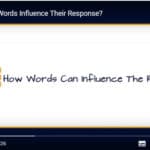Customer survey questions come in many shapes and sizes and it can be confusing as to which you should use when.
But help is at hand: there are only three types of customer survey question you will ever need. In this post we’ll examine each question type, how it should be used and provide examples.
The Goal of Customer Survey Questions
The purpose of a customer survey is to understand how customers perceive the organisation and inform improvements in a way that lifts the overall performance of the organisation. So, you must include questions that will help you meet that goal.
Survey structure
With that goal in mind it logically means that every customer survey must collect three types of information:
Outcome information
These are questions that link the customer’s feedback to the success of the organisation.
Put another way, customer survey outcome questions measure something that is important for organisational success.
As there are only three ways to increase customer value there are only three relevant things you might try to measure: customer loyalty, customer intent to repurchase, or customer intent to buy more / upsell
Attribute information
These questions attempt to understand how the customer feels or perceives different elements of your products and services. This information is key as it will be used to determine which attributes are the most important and poorest performing. Thus, which need to be improved with the most urgency.
Focusing on improving those high importance/poor performing elements is the key to improving organisational success.
How to improve information
Knowing that improving a specific attribute is part of the answer but the other part is knowing how to improve that attribute. “How” questions provide the insight required to make positive changes in the business.
Customer Survey Outcome Questions
There are only three ways to increase customer value in a business:
- Sales: Increase per customer sales
- Loyalty: Retain customers longer
- Cost: Lower the cost to serve
So, the outcome question must measure one of these.
While there are many questions that might be used, there are three that are most common and have demonstrated links to the drivers of value.
Net Promoter Score
Net Promoter Score® (NPS®) a common and useful customer survey question that has been proven to link to customer retention and cross-sell/up-sell in a variety of industries.
The question is phrased:

This question can be used in a variety of business situations: Business to Business, Business to Consumer, Government to Citizen, Relationship and Transactional surveys.
Customer effort Score
Customer Effort Score (CES) has also shown links to customer retention and upsell. First released in 2010 the question has subsequently been reviewed and the best practice, 2.0 version, is:

Because of its strong customer service nature, this question works best in transactional customer service situations.
Customer Satisfaction
Customer Satisfaction (CSAT) is one of the first outcome questions used by companies but it does not strongly correlate to any of the business outcomes noted above. For this reason it is falling out of favour as a customer survey question.

Customer Survey Attribute Questions
Attribute questions should be easy for the respondent to understand and contain a single idea or theme.
The themes for these attribute questions can come from many sources:
- Ask customers in a convergent interview
- Extract themes from social media content
- Ask around the organisation for areas that staff feel might be important to customers
How to write an attribute based survey question
The best approach is to use what is called “Construct Specific Response” options. This simply means the responses are specific to the question.
For example:

Compare that with the other way that the questions could have been asked:

This second form of the question is called an Agree/Disagree response option.
While it is easier to just create a series of statements and ask the respondent to Agree/Disagree, this approach is less accurate.
[Aside: for those reading carefully you will note this structure is exactly how the Customer Effort question is phrased. You can use this structure for that question as it has been specifically researched.]Use a 7-point rating scale
Except for some of the outcome questions, a 7-point scale should be used. This is because, for a bipolar question, 7-point scales have been shown to be more accurate
A bipolar scale one that has an extreme at either end with a neutral response in the middle, e.g. very unhappy to very happy.
Attribute Question Examples
Here are some customer survey attribute question examples:
How do you rate the technical competence of our operational staff?
“Incompetent” to “Exceeds your expectations”Please rate the access to training courses and workshops we provide.
“Very Poor” to “Very Good”How responsive are we in returning your call or email?
“Very Unresponsive” to “Very responsive”
How questions
The most common and useful “How” question is the open ended or text response question and they don’t have to be complex to be very useful.
Here are some examples:
Please tell us what we can do to improve.
Do you have any comments on our business approach?
How could we improve our technical support?












